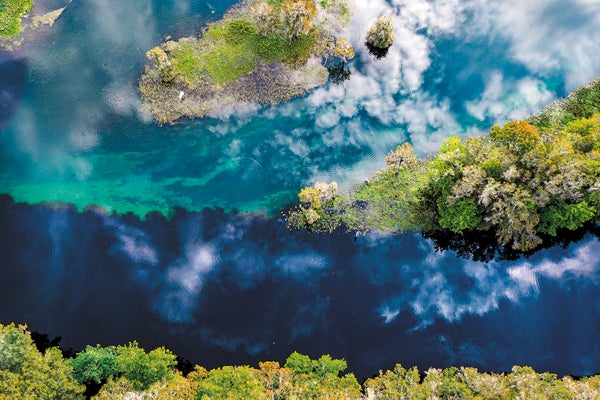Edited by Dava Sobel
When two rivers meet,
they sometimes hesitate to mix.
The murky sediment load carried by one
keeps its distance from
the clear blue-green of the other.
Each reflects the color
of the landscape it has carved,
sometimes with caution,
and sometimes with turbulence.
Steep canyon walls bear witness
and scars of the steady descent
of water molecules pulled by gravity,
eroding crystals and grains, thirsty clay particles
that tumble and drift in the flow.
The rivers emerge and meander
away from the rugged mountains
and toward each other,
beginning to unburden their loads.
On supporting science journalism
If you're enjoying this article, consider supporting our award-winning journalism by subscribing. By purchasing a subscription you are helping to ensure the future of impactful stories about the discoveries and ideas shaping our world today.
The distinct paths become one,
and the denser stream ducks under,
hiding its sedimentary past
along the line of mixing,
where eddies test the waters.
Clouds and clarity
complement each other,
and, with time,
dispersion and blending
shift the current into balance.
